Main thoughts
- Building a marketplace requires a lot of planning and research.
- The first step is to identify your target audience and the products or services you want to offer.
- You should also research your competitors and identify what makes your marketplace unique.
- Once you have identified your target audience and unique selling proposition, you can start building your marketplace.
- You will need to choose the right technology stack and software development team for your project.
- You should also focus on creating a user-friendly interface and optimizing your marketplace for search engines.
- Marketing is also an important part of building a successful marketplace. You should focus on building a strong brand and creating a marketing strategy that targets your ideal customers.
Video summary
[lyte id=’QXGPtpbwh2U’ /]
The Definition of a Marketplace Platform
We are living in a challenging time right now. Who could predict the devastating global coronavirus pandemic in 2020? While doctors save lives and try to find a cure for the virus, quarantine measures have damaged businesses around the world. Employees have lost their jobs, while business owners continually suffer financial losses caused by the lockdown. Shutting down stores paralyzed a lot of retailers, and there are no quick fixes for the recovery process. How can you protect your business and minimize your losses in similar crises? Marketplaces could be one of the answers to this question.
Marketplaces have made some serious buzz after successful examples of them became famous. Yes, it is a huge and nascent industry to expand your business in, attract new customers, build a brand image, and ultimately increase revenue. But in the current situation, it is more than an ambition to become the next Jeff Bezos. Moving your business online and building an online marketplace could be a saving grace at a time when people are not allowed to be in a physical store.
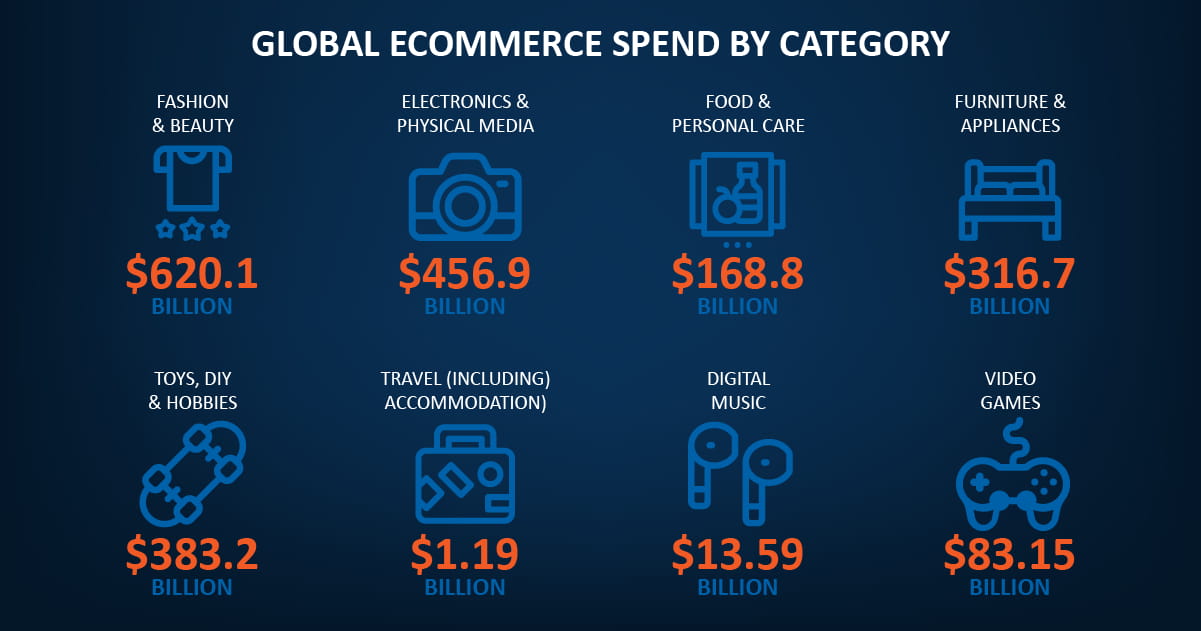
What is a marketplace?
A marketplace is an independent platform that operates online. Its purpose is to connect buyers and sellers directly, ensure the integrity of a deal for each side, and offer features such as detailed tracking of purchases in real-time.
What are the benefits of marketplaces?
The main advantages of marketplaces for businesses are the following:
- You will get an additional channel on which to advertise and sell your goods or services.
- Compared to other sales channels, marketplaces require lower marketing costs.
- More opportunities for international sales.
- Marketplaces are loved by customers. Besides, they are very convenient.
- An established online marketplace improves your brand image and builds client loyalty.
- Getting independent reviews and opinions on your products or services makes them more attractive and ultimately increases sales.
- Marketplaces make it easier to find new business partners.
- They work 24/7 with no limits on operating time.
From this article, you will get our insights on how to build an online marketplace website. We will get clear about classification, compare ways of creating a marketplace, explain the process for startups, and give you some tips on how to hire a dedicated development team, and breaking down the budget. Let’s cover everything you need to know on how to build a marketplace!
How to Create Online Marketplace Website 101: General Classification
To get the most revenue out of your effort, it is important to pick the right type of marketplace. Whether you want to create a marketplace from scratch or add features to existing infrastructure, a clear understanding of this classification will help you get the best results.
First, we need to focus on your Target Audience. The options are:
Peer-to-Peer (P2P)
This model, which has another name — customer-to-customer (C2C), focuses on presenting customers with an opportunity to sell and manage products or services. Just imagine Etsy, which is a place to sell handcrafted goods made by very small groups of people. Big brands are not allowed there; this is a platform for people with artistic skills to share their work. Anyone can buy items; sellers pay fixed fees. Another great example is Uber — which offers and manages peer-to-peer ridesharing.
Business-to-Customer (B2C)
B2C is for businesses that want to sell their products or services directly to a customer without any third parties involved. Most sellers who use this model offer a wide variety of goods. AliExpress is probably the most notable example here.
Business-to-Business (B2B)
B2B marketplace platforms help businesses improve the distribution of their products by finding new partners. Alibaba is the biggest B2B portal in the world, covering B2C and C2C. Founded by Jack Ma and Peng Lei in 1999, it’s a holding company that consists of companies such as Guangzhou, Evergrande Taobao, F.C, UCWeb, 1688.com, and Aliexpress. Alibaba generated nearly $72 billion in revenue in 2020.
Next, let’s discuss the differences between vertical and horizontal marketplaces.
Vertical Marketplace
These types are very narrow — aimed at a specific niche, industry, or demographic. The advantages are the ability to save money on marketing campaigns, provide more value, and gain more revenue from a smaller number of customers. Besides, it is easier to maintain high-quality products and services on the platform.
The disadvantages are quite obvious here because this narrow approach creates a lower overall number of transactions. Thus, you need to be proficient in the chosen niche to stand out among your competitors.
Horizontal Marketplace
With a horizontal marketplace, everything is the opposite; it covers all imaginable categories of items — usually, the ones in the highest demand to appeal to the largest possible target audience. The most notable advantage is low operational costs, as all sales are derived from the same model. The appeal to multiple types of target audiences results in more transactions and more profit.
The first disadvantage is that it is difficult to build a precise marketing strategy — customers in horizontal marketplaces are very different. The second disadvantage comes from the pressure created by the competition. There are tons of horizontal marketplaces, making it hard to stand out among one’s competitors, attract new customers and sellers, and create a unique selling proposition. If that’s not enough, it’s way more difficult to provide effective customer support and build trust among participants.
Financial models
The three most popular financial models for marketplaces are Commission Model, Subscription Model, and Listing Fee Model. In a Commission Model, the marketplace owner receives a previously agreed-upon fee for each transaction. The Subscription Model means that each registered user pays a certain amount of money regularly. In a Listing Fee Model, each user pays the same price for listing a product or service.
Management types
You can choose between unmanaged platforms, managed to a certain degree, or fully managed.
Products
The most popular type here is goods marketplaces, with eBay being a quick example. Another common type is service marketplaces, like Airbnb or Upwork. Hybrid marketplaces are a mix of both previous types and offer goods and services at the same time — think of Craigslist. Crowdfunding platforms for startups like Kickstarter could be classified as project marketplaces.
By interaction
And finally, online commerce platforms aim to give a customer a link to buy the desired product, while online-to-offline try to connect a customer with an actual brick-and-mortar store.
To wrap it up, and give you an overview of all of these types:
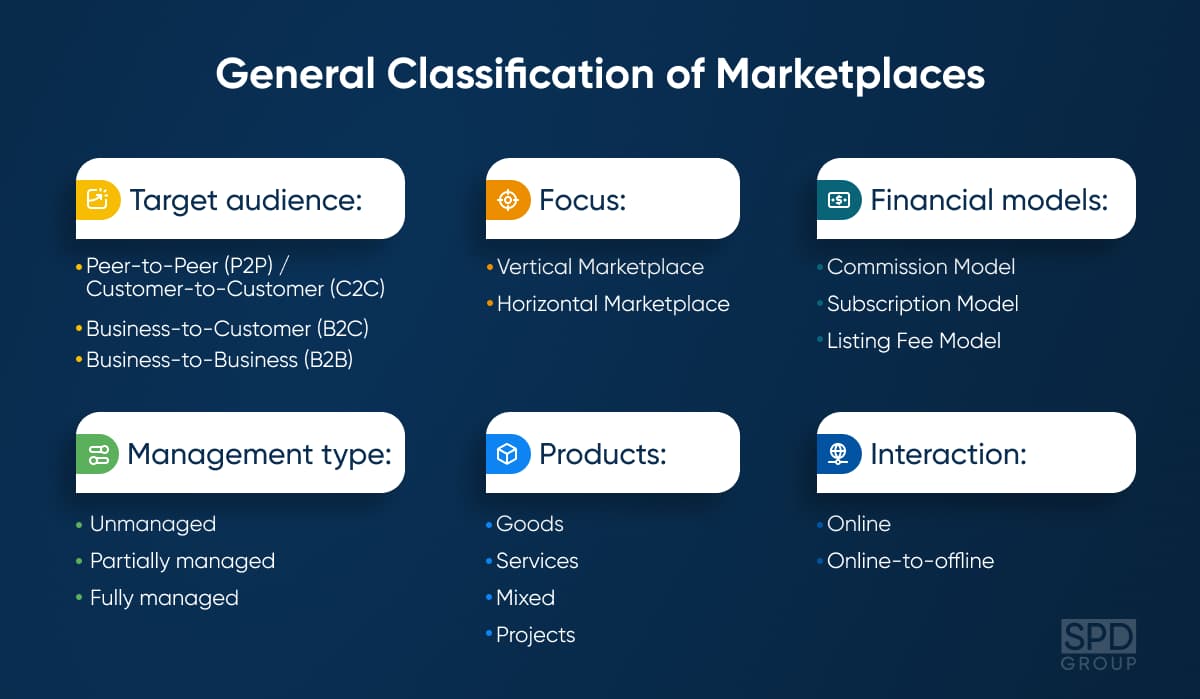
Now let’s move on to the detailed description of how to build a marketplace website.
How to Build a Marketplace: What Are the Options?
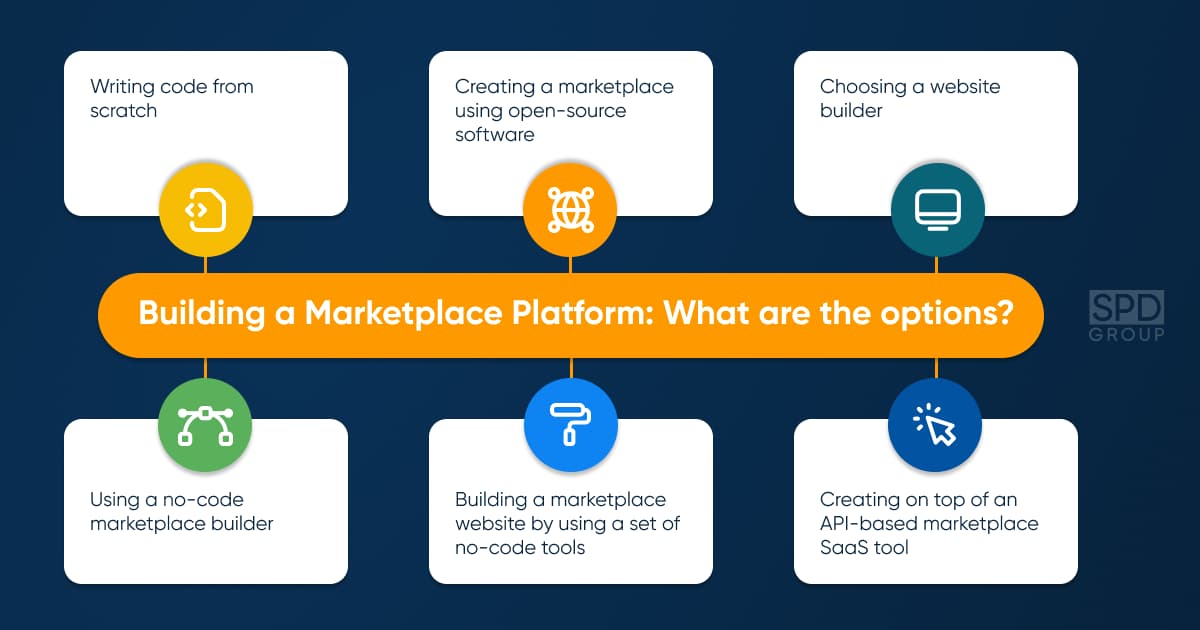
Now let’s compare the different options to build a marketplace website. Of course, every use case is unique and it’s next to impossible to figure out a single answer to how to create a marketplace website for every business. However, we will take a closer look at each option regarding time to market, the technical expertise required, costs to build, scalability, and customization. Hopefully, you will see which option is better suited to start your own online marketplace or create an ecommerce website from scratch.
Writing code from scratch
If you want to do everything just like you have imagined — especially if you have the necessary expertise or access to a team of specialists — this option may be for you. Having access to the code, no third-party software, and licensing are the main benefits here.
On the other hand, this approach takes a lot of time — at least three months, because creating a marketplace website that handles all transactions smoothly is no easy task. This is a major drawback because it is often very important to create an online marketplace website as soon as possible. Experimenting on developing custom features (which might not be useful or popular in the end) and supporting a platform by yourself can drain your budget. Speaking of budgets, this approach can cost you significant money — starting from around $50,000.
Creating a marketplace using open-source software
Using existing software will give you a time advantage compared to creating a marketplace website from scratch — marketplace software already has all basic functionality features, and you can quickly add features to the set. It will also be a lot cheaper to build than the previous option.
Time is an issue here, too; it will take at least a month before you can launch. Also, it’s hard to find top open-source software that is easy to customize — some adjustments may require the involvement of developers. Maintenance and updates can also be an issue. For example, if a software vendor doesn’t offer updates on legal requirements for payments, this has to be handled by your team.
Choosing a website builder
Basic website builders are indeed very affordable, and there are plenty to choose from. Just look at Magento and Shopify as e-commerce tools or Wix and WordPress as website builders. Some of them even have heavy customization options with the help of various extensions. So, choosing a website builder could be the cheapest way if you know how to handle plugins and tools.
However, it can take weeks to optimize everything both for buyers and sellers. This includes understanding the user’s journey and adjusting every plugin and extension to meet users’ high expectations for a good experience. Also, keep in mind that you are then limited to the functionality that a particular builder offers — which hampers scalability. There is also a big chance that you won’t find a plugin for the desired function. But even if you do, it is very risky to gamble your marketplace’s success on the right interplay between a set of plugins and extensions — if something goes wrong, it could paralyze your operations. Managing plugins can easily become a full-time job.
Using a no-code marketplace builder
Using a software-as-a-service (SaaS) or a marketplace-as-a-service tool is the fastest possible way to launch a platform. Sometimes, you could be online within a day. SaaS software is tested by other businesses, and such a quick launch allows you to get validation of your idea and determine the features that are important to your clients. This approach gets you the best UX with minimal investments. The final benefit is that you don’t need to know how to write code to manage your online business and all of its aspects.
However, similar to the previous approach, there might be some limitations in the number of features because software providers tend to work with as many customers as possible. This is a problem regarding scalability too — if you have a desire to grow your business, the available features may be insufficient.
Building a marketplace website by using a set of no-code tools
If you are proficient in the variety of no-code tools, you can take over the marketplace website development process. Choose the right components for functionality, and allow for future updates. But even in this scenario, it could take weeks to find the exact tools you need and get an understanding of how to build with them. If you don’t know what Webflow, Airtable, Parabola, and Jetboost mean, this approach is probably not for you. Even for the experienced no-coder, time is also a factor here — no-code tools require at least two weeks to get a handle on. In any case, the resulting platform can have an unstable performance and require a lot of additional work in the future.
Creating on top of an API-based marketplace SaaS tool
This approach allows you to focus on the features, rather than wasting time on the basics. Compared to creating a marketplace from scratch, it could be dramatically cheaper. It is more customizable than any no-code tool. You can experiment with your ideas and integrate third-party software. Finally, it is reliable regarding support, updates, and compliance if the software provider pays enough attention to these aspects.
However, it could be considered a drawback that in this case, you need to have marketplace development skills or leverage ecommerce development services or dedicated development team services. Building on top of APIs is more costly and time-consuming than the no-code tool approach — it could take up to a month.
Don't have time to read?
Book a free meeting with our experts to discover how we can help you.
Book a MeetingThings You Should Consider While Creating a Product

If you don’t have an existing company that needs to be properly represented online, but have a groundbreaking idea for a business, here are the essential steps for developing a marketplace for startups!
Research and SWOT analysis
Figure out what actual problem your marketplace idea solves. Similar to how Uber focuses on making ride-sharing simple, your idea must have a clear value for the client. When you have this vision, analyze the competition in your niche to evaluate your chances.
Idea validation
Once the main focus is determined, it makes sense to try to gauge the size of the market, see who is likely to use your marketplace and how often, and identify the external sources you need to succeed.
Planning stage
At the planning stage, it’s crucial to gather the requirements, complete market research, create specification documents, design wireframes, estimate the delivery time, and settle on the marketplace startup costs.
Forming a team
Depending on the budget and scale of the project, it may require a wide variety of specialists such as Back-end and Front-end Engineers, Quality Assurance/Automation Engineers, and UI/UX Designers. Depending upon how the marketplace development process will be managed, you may need Project Managers, Product Managers, and Business Analysis Specialists.
MVP/Development stage
This is the most important phase of a project that is worth a detailed article of its own, as a lot of ground must be covered. So, we won’t go into too much detail. But this is the time in your project life cycle when you need an expert team to rely on. The team must have enough experience and knowledge to build the right continuous delivery process, develop the MVP, and then stick by you until the project is completed.
Forming a marketing strategy
It’s important to have a marketing strategy that will turn into a winning strategy after the release of your marketplace. Thus, it makes sense to get in touch with sellers in your niche on your competitors’ marketplaces and business directories. As for customer acquisition strategies, there are a lot of them — including setting up a landing page to collect emails before the launch of your marketplace; advertising your startup in online communities; contacting the influencers of your target audience, or starting your blog.
How Do You Scale a Marketplace?
When thinking about how to build an online marketplace website, you also need to take into account how to expand it in the future. Here is some advice to help you grow your marketplace quickly:
- Focus on the side that is harder for your business — supply or demand. If you can improve on the weak point, the strong one will be even more powerful.
- If you want to expand, it’s super important to find and work on a certain niche, even if your marketplace is horizontal. You need something to distinguish you from your competitors.
- Offer as many items as possible.
- Work on improving transparency, review, and rating systems as well as insurance to build client trust.
- When introducing new features, focus on one at a time.
- Don’t change your strategy too fast, because the results might be just around the corner.
- Define and target the most valuable users first, as they can influence others.
- Form a community around your marketplace — organize events and host Meetups.
- Protect the uniqueness of your offering or find it, if you don’t have it.
The Key Features for Your Marketplace App
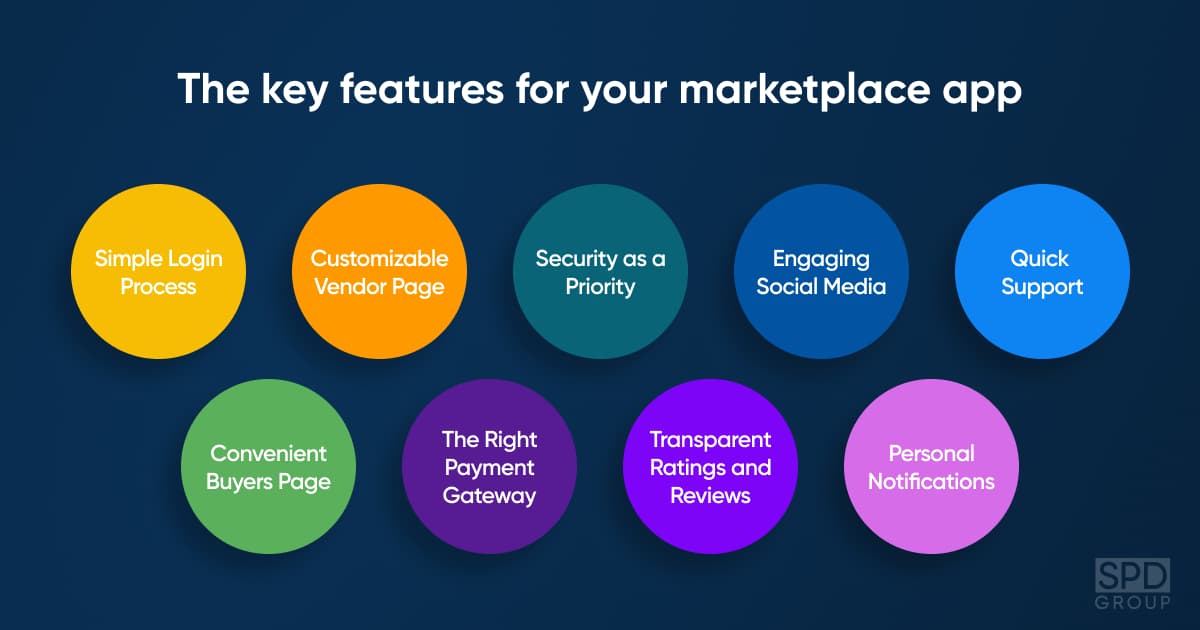
There is a standard list of features that you should consider during the e-commerce app development. Your customers are expecting a certain level of functionality, so you should pay close attention to detail and discuss these features with your marketplace development partner for their proper integration.
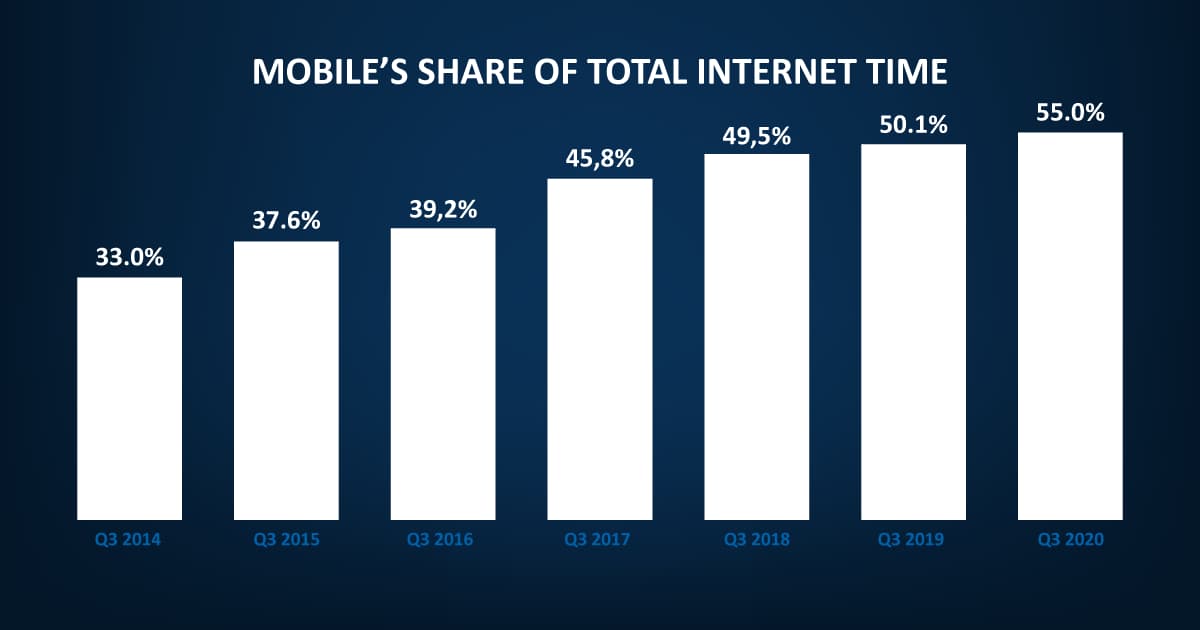
Simple Login Process
Luckily, we are way past the times when for a login process the user must fill up a lot of forms with personal information. Today the user expects to have fast and easy options for signing up from Facebook, Google, or any other possible social media accounts. This feature is a must for matching the expectations of your customers and keeping their user experience at the top. Therefore, to create a marketplace website, do not forget about this feature.
Convenient Buyers Page
Another important feature for ensuring the maximum user experience is a simple but yet fully functional buyers page. The effective design of the cart page is important for users not to waste too much time on basic functions. The details on price, delivery, payment methods, as well as all special offers and discounts must be easy to reach.
Customizable Vendor Page
The vendor on your marketplace must also be satisfied with the experience and have access to complete customization. There must not only be an option to update the list of products, but also menus for editing fonts, colors, payment options, and company details that are very important.
The Right Payment Gateway
Yes, with online transactions it is much easier and quicker to make purchases. However, there are some security risks. That’s why it is crucial to implement a safe and secure payment gateway to your marketplace and offer other payment options as well. We have an entire article dedicated to choosing the right payment systems, if you want to have a wider perspective on payment gateways, look it up.
Security as a Priority
When you operate with payments and transactions, SSL certificates and PCI compliance are the mandatory features that help ensure the safety of your customers.
Transparent Ratings and Reviews
These two are one of the main drivers of sales on modern marketplaces. Give your users convenient and easy-to-understand rating systems, and both vendors and customers will enjoy using your app.
Along with Ratings and Reviews, the option of sharing on Social Media is another key driver to sales success and a feature that is expected on any online portal in 2021.
Personal Notifications
One of the best tools to keep your customers engaged is a fine-tuned system of personal notifications. When your vendors have any special deals, free shipments, or seasonal discounts, customers will receive an update in no time!
Quick Support
Having a chat support system is very important for customer experience and engagement. Just having this functionality is considered standard, but you can go one step further and offer solutions like AI-powered chatbots for 24/7 support.
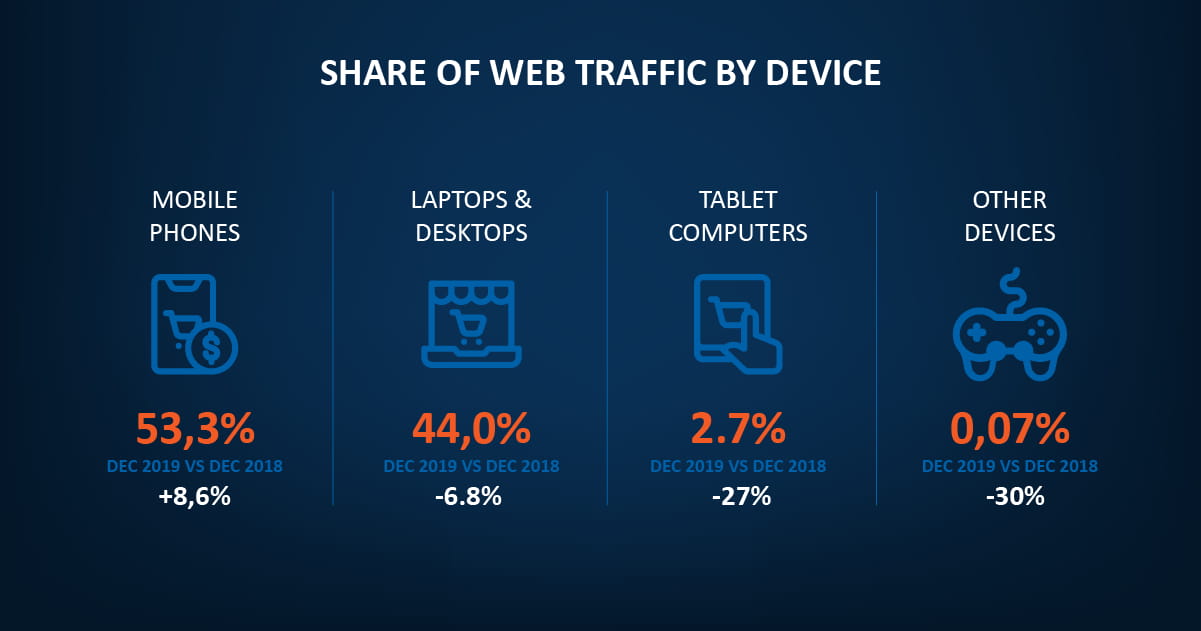
Budget Breakdown: Online Marketplace Development Costs
So, how much does it cost to build a marketplace website? We have finally arrived at the main point of this article. Now that you know the classification, approaches, and even the process for startups, we can talk about the money. It’s all about your budget. According to the average marketplace costs in 2022, the following options are available:
$1,000-$5,000 budget
Building a marketplace website from scratch with a hired team of experts is not an option at all because of the costs involved. However, you can consider leveraging a Software as Service solution or maybe an open-source software marketplace. Using a generic website builder is also a great possibility for this amount of money — if you can code and you don’t need the help of a custom software development team, you can try to build it on your own.
$5,000-$50,000 budget
This is a great budget to work with. You can use API-based software, build a marketplace platform, and still have some money left over to implement new features. Hiring a developer and using generic website builders or open-source software is also a possibility here, but you must be aware that you might not have much money left over for updates. This budget is still not sufficient to build a platform from scratch with hired software developers.
$50,000-$150,000 budget
This budget is perfect for hiring top software developers and building your custom marketplace from scratch with all the necessary features. You are limited to only what you need to achieve; all options are available with this budget. When the cost of developing a marketplace is not the most important factor for you, this is the best way to go.
Hopefully, these rough estimates will provide you with a basic understanding of how much it costs to build a marketplace website.
Finding the Right Software Development Team To Build An Online Marketplace Platform
The real choice in developing a marketplace is between outsourcing and in-house teams. Both have their pros and cons; therefore, if you want to create your own online marketplace, find out about each of the approaches in more detail and pick the one that is more suitable for you.
In-house
With an in-house team, you will have full control over the process and will be able to estimate any aspect of software development. However, the cost of an in-house team is a major disadvantage. Also, you need to have the required technical knowledge or hire a CTO to steer the project and recruit the right experts for it. The time spent on putting together a team of experts can be a factor in the overall success of your marketplace.
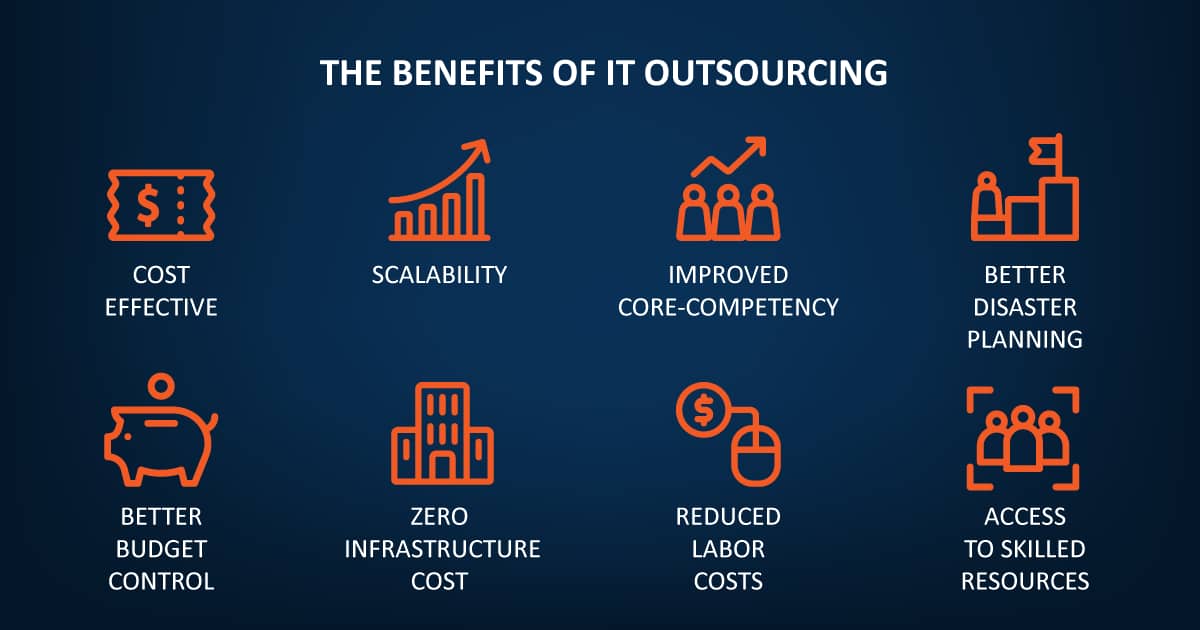
Outsourcing
Why should this option be considered? Under the outsourcing option, you get the most beneficial pricing—marketplace development services are significantly less expensive in well-known outsourcing destinations than in the United States, Canada, or Western Europe. The second advantage is expertise—you can find an already existing experienced team of marketplace developers rather than try to hire one expert at a time. The drawbacks here are any possible security issues, time zone differences, lack of visibility, and failure to meet deadlines. But with a trusted software outsourcing partner that has a proven track record, outsourcing could be your best choice.
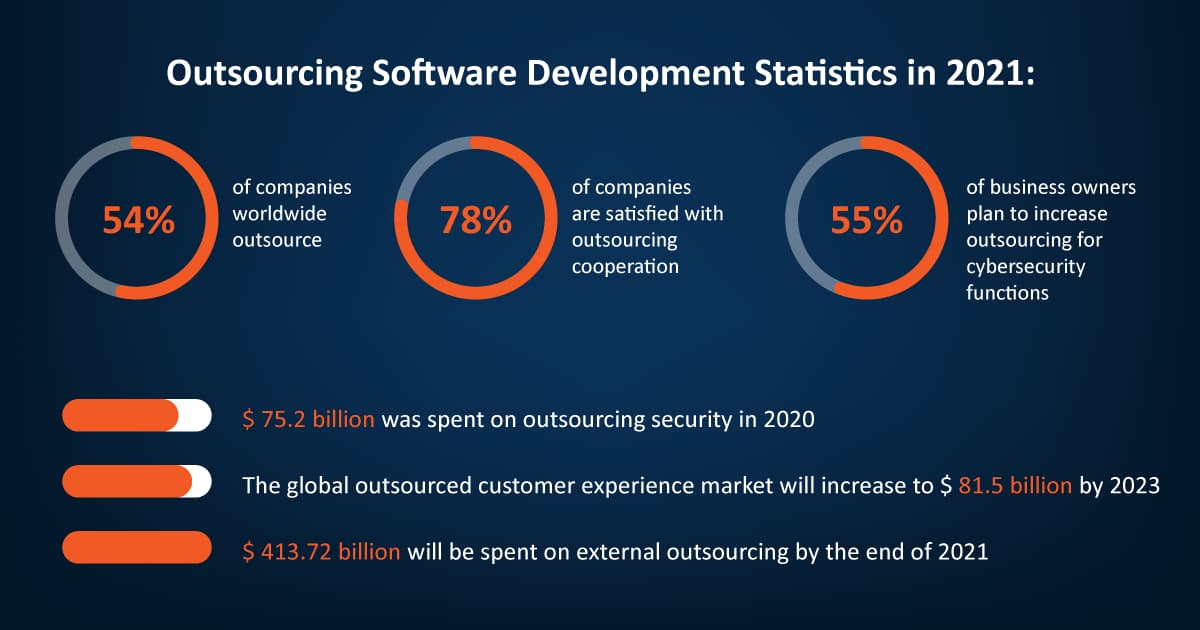
Our Expertise in Marketplace Development
It’s time to share SPD Technology’s experience on how to start an online marketplace — we have been engaged in creating this kind of software for over 10 years. Hopefully, our story will help you see the advantages of the model and approach we went with and decide whether they are suitable in your case.
From the very start, our client chose SPD Technology as an outsourcing development partner for creating a marketplace startup. The project was set to be developed from scratch. Although this approach has its flaws, it proved successful here. The main benefit of developing a marketplace from scratch is a huge diversity of the features one can implement. That’s exactly what helped the project become one of the most powerful white-label B2B and B2C E-Commerce platforms in the world and gain recognition in the United States, Canada, and Europe.
We did not create just another online store for selling all kinds of goods and services – the websites on this platform can be customized and branded according to a client’s needs. White labeling for sellers includes various unique types of back-end functionality. Such functionality is unattainable under any other approach (e.g. Magento or no-code builders) used to create an online marketplace. In short, a seller can leverage all the functions and options of the platform, while making their marketplace website look like it was custom-developed for a specific brand.
The startup was later acquired by a leading coupon and gift card seller in North America and integrated into their existing system. After the acquisition, the components of the online marketplace website were expanded and now include:
- An advanced white-label customization engine.
- A complex payment framework that supports over 20 payment systems.
- Virtual money support.
- Reporting and sales analytics.
- Single sign-on integration with a client website.
- Fraud prevention and detection functionality.
- Integration of subscription and email services.
- A wide range of loyalty functionality, promotional campaigns, refer-a-friend program, etc.
- Automated discount and sales programs.
- A custom framework for cross-client product sales.
When the acquisition took place, the involvement of the outsourced team turned out to be a significant advantage. It’s much faster and easier to increase the size of an outsourced team. In this particular case, the team was successfully scaled up to 100 experts when this became necessary for the new owner.
We use the most effective approaches and modern for our outsourced teams to deliver the best results for our clients. One of the tools that allow our distributed teams to work on a project independently of each other is Metucat. This is an Integrated Framework for developing, maintaining, and evolving data-centric applications. Metucat drives and controls application development using visual metadata, where the architecture becomes an organic part of the system, and it can be configured to create applications that fit into any data platform used by an enterprise or a startup.
This framework can be used by architects, developers, and business analysts. We already discovered in practice its effectiveness, as it helped us to save up to 50% of the time, spent on planning, analysis, and design on our recent project.
Now, SPD Technology not only helps support and improve the client’s marketplace platform, but also provides unification and platform consolidation services that were not initially required for the startup. Therefore, if you do not know how to create an online marketplace and are looking for a reliable partner, SPD Technology is ready to help you.
The Most Successful B2C Marketplace Platforms
For decades, online marketplaces have managed to build trust and their market segment has grown immensely. They have become a way to go in the future. Before you find out how to create an online marketplace, it is good to know your potential competitors and inspirational success stories. So, here is a quick recap of the top players in 2023:
Amazon
Amazon is the biggest and the most successful marketplace in the United States. Initially, it was an online bookstore but has now expanded to include toys, electronics, pieces of art, and tons of other items. In 2020, it’s a multi-billion-dollar corporation with 11 marketplaces across the globe with a customer database from 180 countries. Amazon became a technological company and now offers cloud infrastructure services (AWS), analytics services (Alexa), other software products, and multimedia content. They leverage Artificial Intelligence for Predictive Analytics in Retail to know what a customer wants and even provide Customer Demand Forecasting with Machine Learning. Here, the marketplace is not the sole business model for Amazon, as they are looking to grow in other directions to remain the leader in E-Commerce.
“We’ve had three big ideas at Amazon that we’ve stuck with for 18 years, and they’re the reason we’re successful: Put the customer first. Invent. And be patient.”
Jeff Bezos, founder, CEO, and the president of Amazon
“We’ve had three big ideas at Amazon that we’ve stuck with for 18 years, and they’re the reason we’re successful: Put the customer first. Invent. And be patient.”
Jeff Bezos, founder, CEO, and the president of Amazon
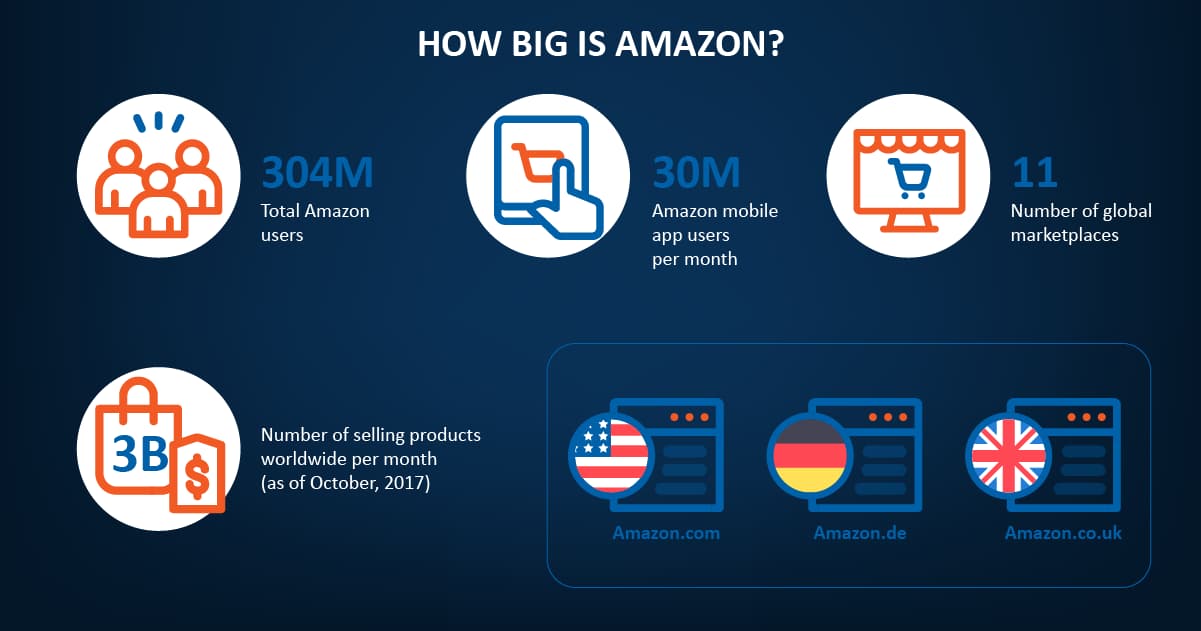
eBay
The second biggest marketplace website in the world, eBay operates in B2C, B2B, and C2C sectors. It was founded by Pierre Omidyar in 1995 as a personal website. Although the platform is based in the USA, it has over 20 websites all over the world that receive around 1.2 billion views in a month. eBay has almost 180 billion active users and more than 350 million sale items. The platform had 10.8 billion US dollars in revenue in 2019.
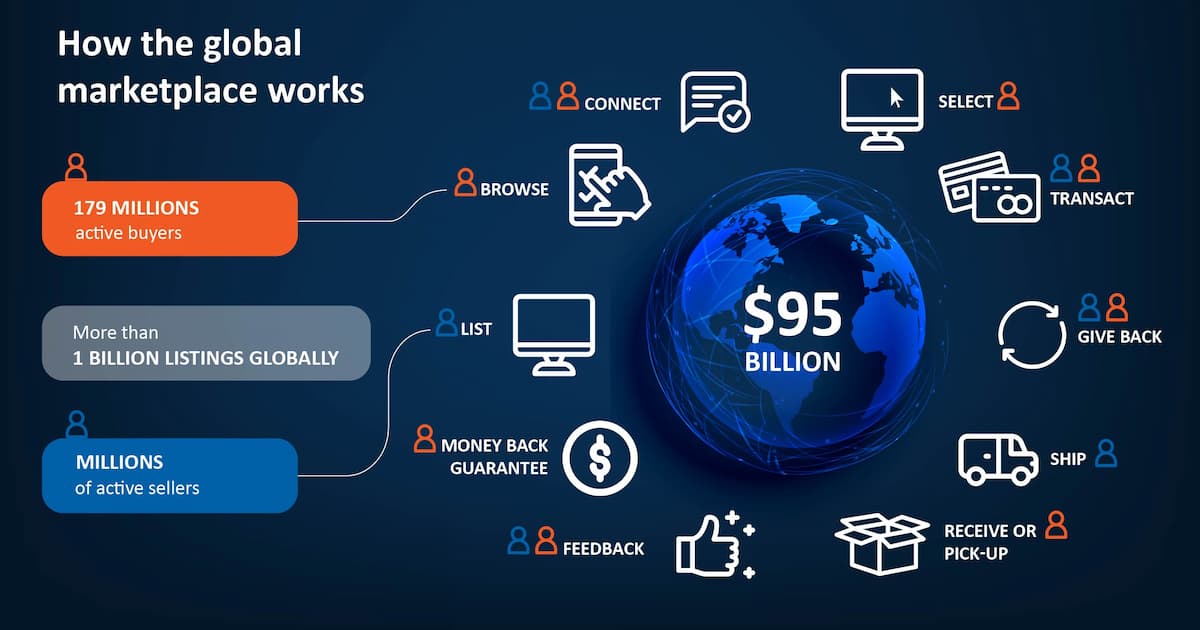
Etsy
This quite unique platform was founded in 2005 by Robert Kalin, Chris Maguire, and Haim Schoppik. Etsy focuses only on handmade and vintage (20 years plus) goods. The initial idea had become a great success, with annual revenue exceeding $600 million. Etsy allows 95% of its users in over 80 countries to run their business from home, which is especially important at the time of Covid-19 restrictions. The eCommerce website receives over 50 million views monthly and sells more than 50 million items.
Bonanza
This marketplace is a vision of Mark Dorsey and William Harding, who have managed to create a viable and strong alternative to eBay. The initial idea was to create a place for collectors, focusing on rare items like jewelry, stamps coins, books, etc. But nowadays, you can find anything you want on Bonanza. The platform welcomes sellers from over 200 countries, which includes 2.5 million active users. Their website receives over 7 million views in a month, and there are more than 20 million items available for purchase.
Rakuten
In the global electronics market, Rakuten is considered holding second place to Amazon. While originating from Japan, Rakuten covers over 30 countries in 2021, including separate websites for Germany or Taiwan, for example. This creation of Hiroshi Mikitani is now considered the fourth largest marketplace in the entire world, and it doesn’t intend to stop its growth. Rakuten is a company that embraces innovation in any shape or form and strives to help its vendors and customers achieve their goals. The total number of active users of this platform is close to 100 million and there are already over 200 million items available for purchase. Rakuten prides itself on being an easy solution for vendors to enter an E-commerce business because on a platform a vendor not only can create a shop with products but also run a blog. The Rakuten platform offers its sellers up to 20 different options for shipping, which allows them to be more flexible and adjust to the needs of buyers.
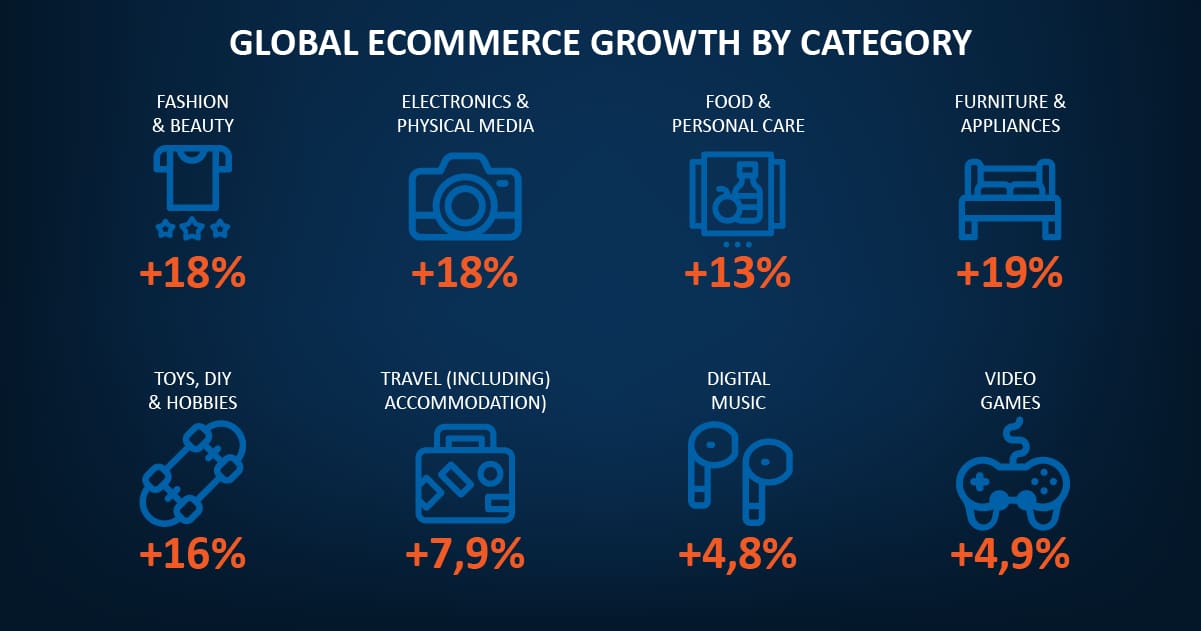
What is the Marketplace Development Industry Situation? [Updated 2023]
The COVID-19 pandemic has triggered a massive rise in E-commerce that is still going strong. It’s still a great time to open your online marketplace if you didn’t do it before.
Macy’s, an American store chain giant, opened up a curated digital marketplace as late as September, 2022. This marketplace followed the model set by Target and Amazon, in which retailers provide platforms for other resellers. Macy’s decided to choose this model because of the performance of their online sales. As a result, their marketplace is planning to hit 10 billion sales in 2023 and cover losses caused by the closure of physical stores.
Another important thing to consider is mobile commerce. In 2023, this industry will continue to be going strong with USD 620.97 billion in sales or 42.9% of E-commerce sales by the end of the year!
SPD Technology is following all the latest trends and advancements. We are ready to help you build a modern marketplace with a custom mobile application that will help you boost your sales and be on the cutting edge of innovation.
Conclusion
Online marketplaces are probably the future of the retail industry. According to Statista, 75% of marketing executives believe that the most important benefit of marketplaces for businesses is the opportunity to reach customers in the places where they prefer to buy. While that’s a good point, marketplaces have an additional valuable function. When online becomes the only way to reach customers, like during the 2020 coronavirus pandemic, a marketplace could be an essential solution to protect your retail business. With the right ecommerce development company, it is possible to create a custom online marketplace platform that will secure your business in any crisis.
Further Reading
- The Beginners Guide On How To Building An Online Marketplace
- How To Build A Successful Online Marketplace Business
Ready to speed up your Software Development?
Explore the solutions we offer to see how we can assist you!
Schedule a Call